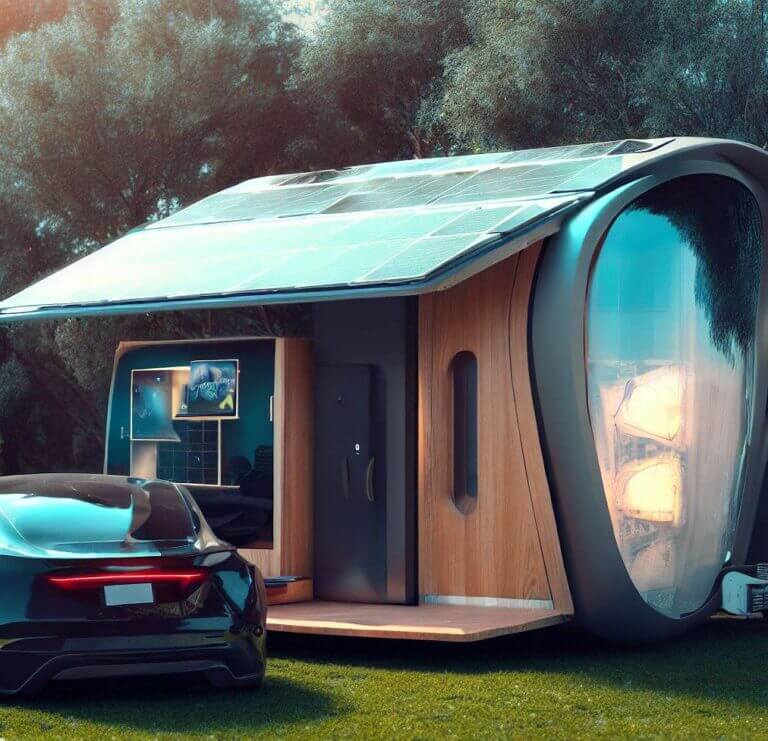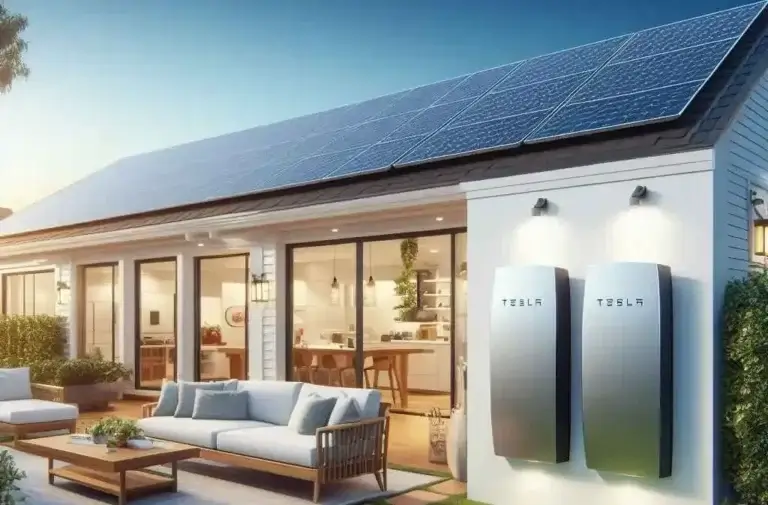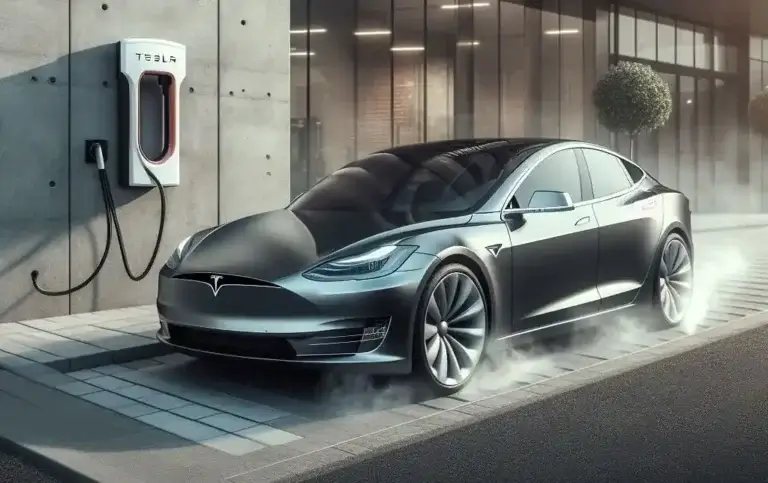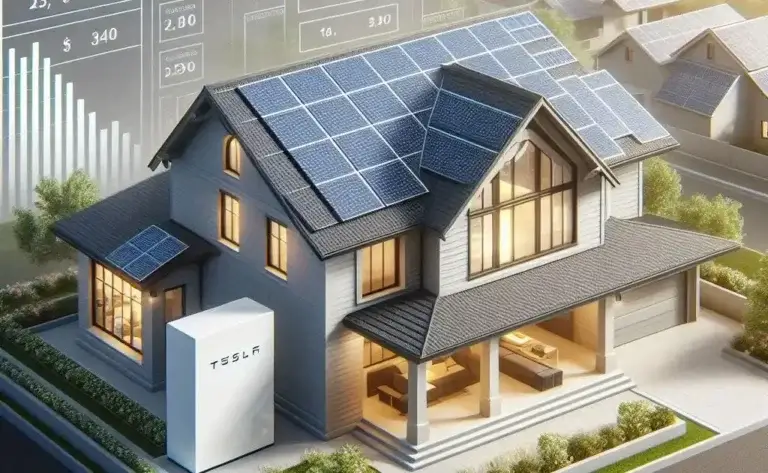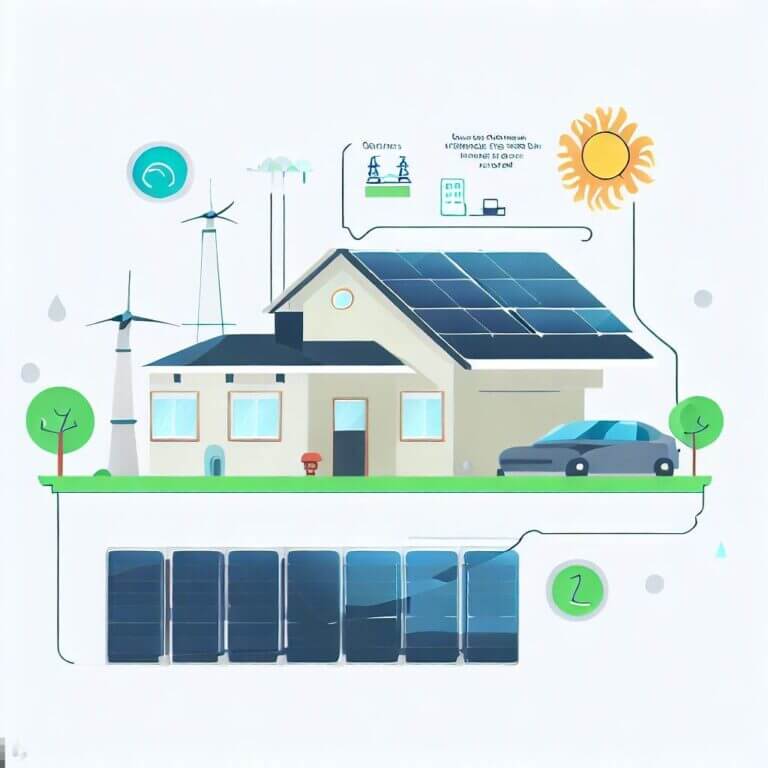How Many Solar Panels to Charge a Tesla?
Are you wondering how many solar panels it takes to charge a Tesla electric vehicle? With Tesla cars becoming more popular, many solar panel owners and EV drivers want to know if they can power their Tesla using solar energy. In this comprehensive guide, we’ll cover everything you need to know, from solar panel output to Tesla charging needs, to help you determine how many solar panels you need to charge your Tesla model.
An Introduction to Charging Tesla Vehicles with Solar Power
Electric vehicles are rising in popularity as more models hit the market with longer battery ranges at more affordable prices. And solar power has also been expanding exponentially over the past decade, providing renewable energy to power homes and businesses. It’s no wonder that EV drivers want to power their cars using their own solar panels.
Charging your Tesla with solar energy is quite viable today. A sufficient number of solar panels on your roof can provide more than enough power not only to charge a Tesla but run your entire home. The big question is: exactly how many solar panels will you need to accomplish this daily?
We’ll analyze how much power Tesla cars use, and the factors that determine solar panel output, and then calculate the specific solar panel system size you’ll need to charge a Tesla Model 3, Model Y, or Model X. We’ll also look at common system configurations and costs. By the end, you’ll know precisely how many solar panels it takes to charge a Tesla based on your car model and home energy needs.
How Many Solar Panels Are Needed for a Tesla? It Depends…
Unfortunately, there is no single one-size-fits-all answer to the question “how many solar panels to charge a Tesla?”. The actual number of solar panels required depends on several important factors:
- Your specific Tesla model and battery size
- Your car’s average daily driving distance and energy usage needs
- Your location and overall solar resource/weather conditions
- Your roof size and panel mounting capacity
- Your budget for a solar panel system
We’ll now look at each of these variables and how they impact the solar panel count for powering a home and EV charging.
Tesla Electric Vehicle Battery Size and Charging Needs
The first determination you need to make in sizing a solar panel system for your Tesla is the EV model and configuration. Tesla currently sells three fully electric vehicles: the Model 3 sedan, Model Y crossover SUV, and Model X luxury SUV. The larger vehicles with bigger battery packs require more power from solar panels for charging.
Here is an overview of power consumption specs for current Tesla models:
Tesla Model 3
- Battery size options: 50 kWh or 75 kWh
- Average driving efficiency: 0.25 – 0.26 kWh per mile
- Standard daily driving distance: 30 miles
- Average daily charging requirement: 7.5 – 8 kWh
Tesla Model Y
- Battery size options: 75 kWh
- Average driving efficiency: 0.26 – 0.28 kWh per mile
- Standard daily driving distance: 30 miles
- Average daily charging requirement: 7.8 – 8.4 kWh
Tesla Model X
- Battery size options: 100 kWh
- Average driving efficiency: 0.35 kWh per mile
- Standard daily driving distance: 30 miles
- Average daily charging requirement: 10.5 kWh
The Tesla Model 3 is the most popular and also most efficient electric car from Tesla. It consumes around 7.5 to 8 kWh for a typical 30 mile daily commute. The Model Y and X SUVs use slightly more at 8 – 10+ kWh per day based on our assumptions. Understanding your Tesla’s average expected energy usage is the first key parameter.
Factoring In Your Solar Resource and Weather Conditions
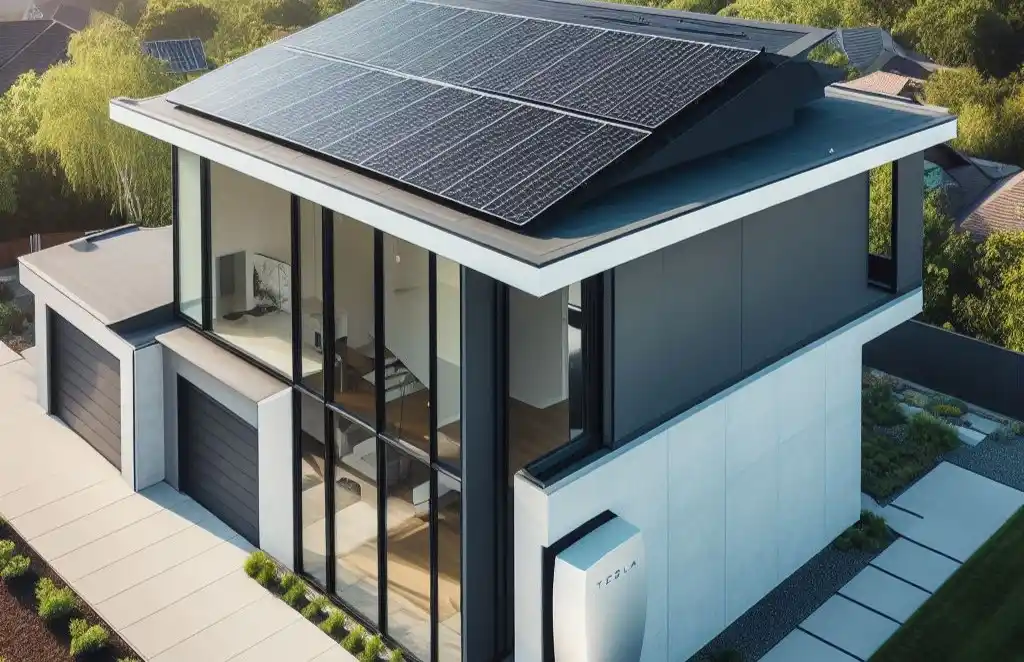
The solar energy potential at your home location is another essential factor for right-sizing a system to charge a Tesla EV. Solar panels produce energy from sunlight photons, turning them into usable AC power. Areas with greater average sunshine will harvest more power from the same solar panel system size.
Solar resources differ significantly across the U.S. The sunniest states in the southwest like California, Nevada, and Arizona can produce 30% or more energy from the same solar panel configuration as cool and overcast states like Washington and Alaska.
When calculating how many solar panels you need for a Tesla EV, you’ll need to know your local solar resource average, measured in kWh/m2/day. This metric communicates how much raw solar energy strikes each square meter surface over one day.
Here are the average solar resources for major regions across the United States:
- Sunbelt (CA, NV, UT, AZ): 5.0 – 7.0 kWh/m2/day
- Southeast (FL, AL, GA): 4.5 – 6.0 kWh/m2/day
- Northeast (NY, NJ, MD): 3.5 – 4.5 kWh/m2/day
- Midwest (IL, MO, MI): 3.5 – 4.5 kWh/m2/day
- Northwest (OR, WA): 3.0 – 4.0 kWh/m2/day
In summary – more sun equals more power from your solar panels. Factor sunshine resources into your specific location with the Tesla power requirements to determine optimum solar panel count.
Roof Space Constraints: Size Matters
Ready for some simple math to calculate solar panel needs? We first have to introduce a new variable – the physical size of solar panels mounted onto your roof.
Modern solar panels for home installations come in standard dimensions of approximately 65 inches by 39 inches. This equates to about 15-18 square feet of surface area per individual panel. Knowing the size is critical for doing roof load calculations and ensuring you have enough physical space to fit the number of panels needed to reach your Tesla charging objectives.
As a rule of thumb, here is how much roof space you’ll need per solar panel:
- 15-20 square feet
- 1.4-1.8 linear feet
Also, consider spacing requirements between panels to prevent shading issues on sloped roofs. Your rooftop real estate is a key system design constraint. There is no benefit to generating more power from solar panels that don’t physically fit!
How Many Solar Panels to Charge a Tesla Model 3 or Y?
Now for the good stuff! Let’s bring together all the variables we’ve analyzed – average EV energy usage, solar resources at your geographic location, and available roof real estate. The goal is to determine how many solar panels are needed to charge your Tesla car battery daily.
We’ll start with the most common and energy-efficient Model 3 sedan and Model Y crossover SUV with 75 kWh battery packs. Here are two sample scenarios that demonstrate solar panel count calculations to charge a Model 3 or Y.
Los Angeles Area Home
- Tesla Model: Model 3 (75 kWh battery)
- Average Daily Driving / Charging Need: 7.5 kWh
- Solar Resource: 6.5 kWh/m2/day (average for sunny southern California)
- Usable Roof Space: 250 sq ft
Calculate Panels for 7.5 kWh Daily Charge
- Each panel: 335 Watt (0.335 kW) nameplate capacity
- 7500 Wh ÷ 335 W = 22.3 panels, rounded up to 23 panels
- At 15 sq ft per panel, 23 panels need 345 sq ft (fits the available roof space)
Chicago Area Home
- Tesla Model: Model Y Performance (75 kWh battery)
- Average Daily Driving / Charging Need: 8.4 kWh
- Solar Resource: 4.0 kWh/m2/day (Midwest average)
- Usable Roof Space: 240 sq ft
Calculate Panels for 8.4 kWh Daily Charge
- Each panel: 335 Watt (0.335 kW) capacity
- 8400 Wh ÷ 335 W = 25.1 panels, rounded up to 26 panels
- At 15 sq ft per panel, 26 panels use 390 sq ft (too much for the available roof area)
- Recalculate for 20-panel system
- 20 panels x 335W = 6700W = 6.7kWh
- 6.7 kWh produced, 8.4 kWh needed → Add Powerwall Battery
In the sunny Los Angeles climate, 23 x 335-watt solar panels can provide enough output to charge a Model 3. But in cloudier Midwest conditions, 20 panels don’t fully meet the power needs of a Model Y crossover SUV. By adding a Tesla Powerwall home battery storage system, excess daytime solar can charge the battery to use at night or metered back to the vehicle.
This demonstrates why a one-size solar system doesn’t fit all EVs or locations. Crunch the numbers based on your specifics.
What About the Tesla Model X or third-party EVs?
So far our solar panel system sizing examples have focused on the smaller Tesla Model 3 and Model Y crossover with 75 kWh battery packs. But what if you need to power a Model X with a 100 kWh battery? What about a non-Tesla EV?
Here is a short overview of considerations and solar panel estimates for other electric vehicle scenarios:
Tesla Model X (100 kWh battery)
- Average Daily Driving: 30 miles
- Daily Charging Requirement: ~10.5 kWh
- Solar panels to meet needs: At least 30-35 panels in sunny climates
Non-Tesla EVs (Nissan Leaf, Chevy Bolt, etc)
- Average Battery Size: 30-60 kWh
- Daily Charging Requirement: 4-6 kWh (Leaf), 8-10 kWh (Bolt)
- Solar panels to meet needs: 10-20 panels depending on battery size
The key points are 1) larger battery capacity equals more solar panels for charging and 2) the principles and panel sizing calculations are similar for non-Tesla electric vehicles depending on battery specs.
Real World Solar Panel Setups to Charge One or More Teslas
Now let’s look at some real-world examples of solar panel systems powering Tesla EVs across different locations, battery sizes, home energy needs, and budgets:
6-Panel DIY Solar Tesla Setup
- Location: Florida
- Tesla Model: Model 3
- Panels: 6 panels (360 watts each)
- Inverter/Equipment: DIY grid-tie microinverter system
- Output: ~2,200 watt (2.2 kWh daily average)
- Cost: $3,000 DIY install
10 Panel Partial Home Solar + Tesla
- Location: North Carolina
- Tesla Model: Model Y
- Panels: 10 panels (330 watt premium)
- System Size: 3300 watts (3.3 kWh)
- Equipment: String inverter, net metering
- Cost: $9,000 before incentives
20 Panel Full Home Energy + 2 Teslas
- Location: Colorado
- Tesla Models: Model 3 + Model X
- Panels: 20 x 330 watts (6.6 kW)
- Equipment: premium string inverter, net metering
- Cost: $19,000 before incentives
34 Panel Large Home Solar + Powerwall + 2 Teslas
- Location: California
- Tesla Models: Two Model 3
- Panels: 34x 320W panels (10.88 kWh)
- Powerwall: 1 Powerwall Battery
- Inverter: Enphase microinverters
- Cost: $39,000 before incentives
These examples showcase solar + Tesla systems in different locations and installations to match needs and budgets. With careful planning and calculations, you can absolutely charge your Tesla with home solar panels.
Charging Tesla Model 3, Model Y, Model X: Key Takeaways
After all that analysis, here are the key takeaways to remember when determining how many solar panels you need to charge your Tesla EV:
Consider your specific EV model, battery capacity, and average expected charging requirements. Model X needs a bigger system than Model 3. Understand your real-world energy needs.
Carefully calculate your geographic solar resource – more sun equals fewer panels for the same charging capacity. Sunny Arizona needs a smaller solar system than rainy Washington State.
Make sure your roof size and panel layouts work – no benefit generating excess solar electrons without physical space for additional panels.
Determine whether batteries are necessary based on energy use gaps after solar panels reach roof space limits. Add Tesla Powerwall or batteries to store excess daytime solar.
Choose equipment like microinverters or string inverters wisely based on incremental capacity needs and total system budget.
And most importantly – calculate an appropriately sized system tailored to your location and vehicle! Common ballpark estimates:
- 6-12 Panels: Light home and EV charging needs, sunny locations
- 15-25 Panels: Typical system size for single Model 3
- 25-35 Panels: Large Model Y or small Model X
- 35+ Panels: Maximum roof coverage for 1-2 Tesla EVs
Now that you know the principles and process behind right-sizing a solar system to charge your Tesla, you can analyze your specific parameters, run calculations, and determine the optimum panel count and equipment investments for your EV energy needs.
EV Charging Station Costs Beyond Solar Panels
As a final note when budgeting your home solar system to charge a Tesla, don’t overlook the other equipment costs beyond the panels themselves:
Electric Vehicle Charger Unit
- Level 2 EV Charger (240V outlet): $500
- Higher capacity Level 2 & commercial units: $800-$2,000+
Labor & Installation Costs
- Electrician fees for installing EV outlet
- Potential panel rewiring needs
- Simple to complex installs: $200-$2,000
Power Management & Metering
- Smart combiner boxes
- Software and integration
- Battery management and DC converters
Factor in the balance of system components critical to integrating solar power with EV charging infrastructure. The panels are just the beginning!
How Many Solar Panels to Charge a Tesla

The number of solar panels required to charge a Tesla depends on several factors, including the Tesla model, your daily driving habits, and the efficiency of your solar panels. However, as a general estimate, you will need approximately 6 to 12 solar panels to fully charge a Tesla.
Here’s a more detailed breakdown of how many solar panels you might need based on the Tesla model:
- Tesla Model 3: Consists of 6 to 9 panels.
- Tesla Model Y: Comprises 7 to 10 panels.
- Tesla Model X: Includes 8 to 11 panels.
- Tesla Model S: Contains 9 to 12 panels.
These estimates assume that you are using efficient solar panels with an output of around 300 watts each. If you are using less efficient panels, you may need more panels to generate the same amount of electricity.
Of course, the number of solar panels you need will also depend on your daily driving habits. If you only drive a short distance each day, you may only need a few panels to fully charge your Tesla. However, if you drive a longer distance, you may need more panels to generate enough electricity.
Finally, the amount of sunlight you receive in your area will also affect the number of solar panels you need. If you live in an area with a lot of sunlight, you may be able to get away with fewer panels than someone who lives in an area with less sunlight.
If you are considering using solar panels to charge your Tesla, it is important to consult with a qualified solar installer to get an accurate estimate of how many panels you need. They will be able to assess your specific needs and recommend the best system for your home.
Power Your Tesla and Home with Solar FAQs
We’ve covered a lot of ground on properly sizing a solar panel system to meet Tesla’s charging needs. Here are answers to some frequent questions that come up:
How much does it cost to charge a Tesla with solar?
The cost to charge a Tesla with solar energy depends greatly on system size, electric rates in your utility territory, and financial incentives. Rough estimates:
- Small DIY solar EV charging systems: $2,500 – $4,000
- Full install with net metering: $12,000 – $18,000+
Can I charge a Tesla with a portable solar panel?
Portable solar chargers and small panels lack the high voltage capacity to directly charge a Tesla EV battery. However, they can slowly add energy back to a Tesla Powerwall home battery during the day. This then transfers to charge the vehicle battery overnight.
How long does it take to charge a Tesla with solar energy?
Most Tesla models equipped with the larger 75-100 kWh battery packs require a full day of solar production in sunny climates to receive a 100% charge. This assumes a properly sized home solar array.
What size solar system is needed to charge a Tesla?
As our detailed examples demonstrated, solar system sizes to charge a Tesla vary widely depending on model, battery capacity, location, weather, and home energy use. Typical capacities:
- 1-2 Tesla EVs: 6-12kW+ solar power system
- Model 3 only: 4-8kW range
- Model X SUV: 8-12kW+ system
Can I power my whole house and charge a Tesla with solar?
Absolutely! A sufficiently large solar panel system with average irradiation can power all home appliances, lighting, HVAC systems, and electric vehicle charging for most homeowners. Use our calculations to determine needs.
Accelerate to Solar-Powered Driving
We hope this comprehensive guide provided the solar and EV charging insights you need to successfully size your system to charge your Tesla electric vehicle using renewable energy. Model 3, Model Y, or Model X – with careful planning and panel calculations, your Tesla can run in sunlight!


